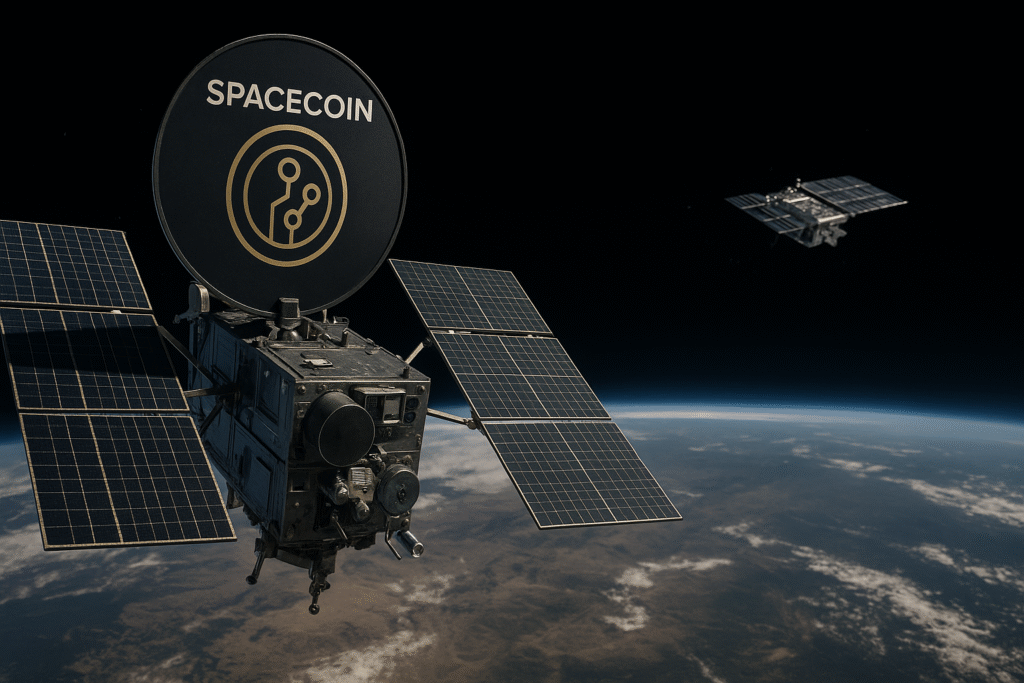By Harshit | 1 OCTOBER 2025 | San Francisco | 9:00 AM EDT
A New Player Enters the Satellite Internet Race
U.S. startup Spacecoin announced on Wednesday that it had successfully transmitted secured blockchain data through space, marking what it called a first for the industry. The company’s leadership framed the achievement as a proof-of-concept for a decentralized alternative to Starlink, the satellite internet service owned by Elon Musk’s SpaceX.
The test, conducted with Bulgarian satellite manufacturer EnduroSat, sent encrypted information from Chile to the Azores, more than 7,000 kilometers apart, via a satellite orbiting Earth. The data arrived intact, reinforcing Spacecoin’s claim that blockchain technology could operate seamlessly through space-based infrastructure.
Why This Matters
The demonstration comes at a time when satellite internet is expanding rapidly, driven by growing demand in regions where traditional connectivity is unreliable, censored, or prohibitively expensive.
Spacecoin’s founder Tae Oh said the company’s mission is not only to bring internet access to underserved communities but also to challenge the centralized model represented by Starlink. Unlike Starlink, where one corporation owns and controls the network, Spacecoin envisions a decentralized system where anyone can participate, make payments, and store data without routing through large service providers.
“Beyond end users, we are also targeting builders — such as developers, telecom companies, NGOs, and infrastructure partners,” Oh explained in an emailed statement.
How It Works: Blockchain in Orbit
At the heart of Spacecoin’s approach is blockchain, the same technology that underpins cryptocurrencies. When a transaction is made on Spacecoin’s network, it is checked against prior records on the blockchain. Any transaction that does not match the ledger is automatically rejected.
By successfully sending this data into orbit and back, Spacecoin has shown that blockchain records can be maintained securely and verifiably through a satellite link — something that could enable decentralized communication and payments across borders without reliance on centralized telecom infrastructure.
The successful test was not just about sending data; it was about proving that decentralized verification could be maintained even when the data leaves Earth and re-enters through satellite relays.
The Competitive Landscape
Spacecoin’s vision directly challenges SpaceX’s Starlink, which currently dominates the satellite internet market with thousands of satellites already in orbit. While Starlink offers global broadband coverage, it is centralized, subscription-based, and fully controlled by SpaceX.
Spacecoin is positioning itself differently, appealing to those who seek autonomy, censorship resistance, and transparency in global communications. The model could appeal to NGOs, humanitarian groups, and developers in politically sensitive or remote regions where traditional internet is unreliable or restricted.
If the model scales, it could provide an alternative to existing internet giants and introduce competition into a market often criticized for high barriers to entry.
Looking Ahead
The company’s next steps include expanding partnerships with infrastructure providers and conducting larger-scale tests. Oh suggested that Spacecoin’s long-term goal is to create an ecosystem where governments, private companies, and individuals can all participate in a truly open, decentralized satellite network.
The successful test marks only the first milestone, but it highlights how rapidly the satellite internet sector is evolving. With demand growing for global connectivity and rising concerns about censorship and monopolization, Spacecoin’s experiment represents a bold step toward a new era of decentralized communications from space.







